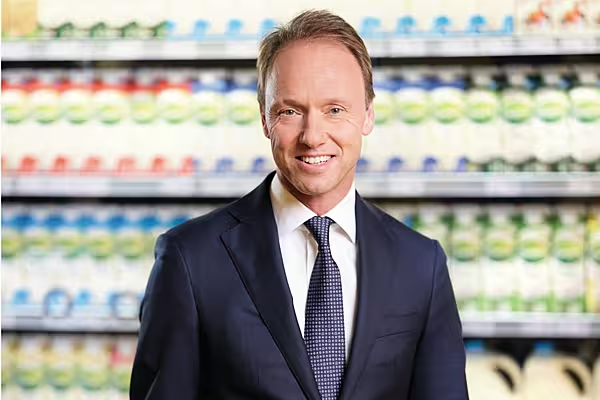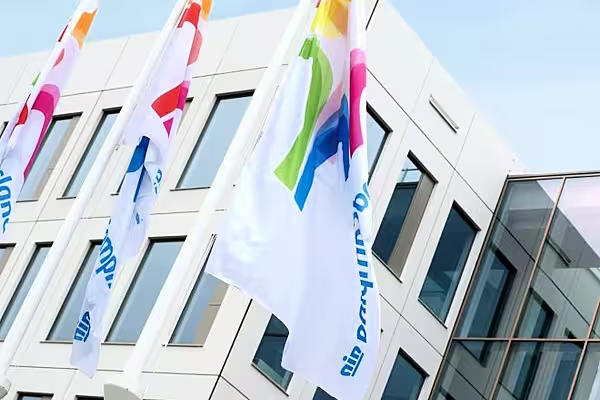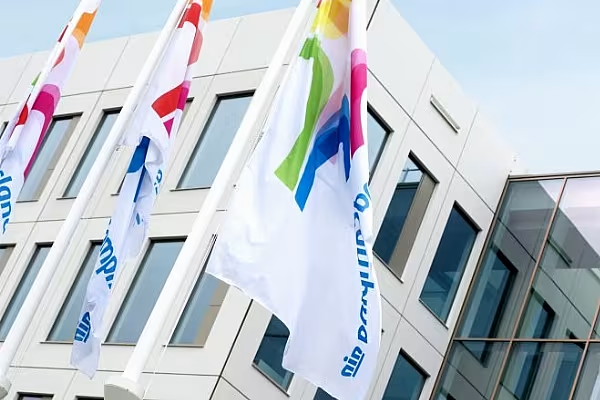FrieslandCampina is one of the biggest dairy companies in the world, however, as chief executive Hein Schumacher tells ESM, there are still plenty of growth opportunities left to explore. This article first appeared in ESM Issue 5, 2019.
Formed out of the merger of Royal Friesland Foods and Campina 11 years ago, Dutch conglomerate FrieslandCampina is one of the world’s largest dairy companies, with its products exported to more than 100 countries, but – as any major business will tell you – the bigger you are, the more slings and arrows you face, and the company has had to bear the brunt of severe commodity price fluctuations in recent years, not to mention the challenge of growing its global footprint in an increasingly competitive sector.
Hein Schumacher, the former president of Heinz’s Asia-Pacific operations, took charge of FrieslandCampina in 2015 and has rung in the changes in the years since, so much so that the Dutch native believes that 2018 was its “most transformational year to date”, with a series of changes to its organisational structure, entry into new markets, and the implementation of new growth strategies.
Operational Assessment
“For many years, we had a successful run, predominantly on the performance of infant milk formula in China, but, at the same time, when that plateaued a little bit, it became apparent that in the rest of the business, such as in the traditional consumer goods activities, there were some cracks that needed to be fixed,” Schumacher tells ESM.
“So, starting at the end of 2017, we changed our structure completely. We were regionally organised – now we are organised around four global business groups. We went from a six-person board structure to a two-person executive board, working alongside a global leadership team. Ultimately, we put our resources into the units that are closer to the consumer and the customer.”
One of the main aims of the restructuring was to define the group’s different business units – FrieslandCampina Consumer Dairy, FrieslandCampina Specialised Nutrition, FrieslandCampina Dairy Essentials and FrieslandCampina Ingredients – and provide them with more autonomy, enabling each to be more reactive to the situation on the ground in their various markets.
“That’s hugely important when it comes to food,” says Schumacher. “Food is local, and consumer preferences are local, too. I was very keen to give the operating units decision-making authority so that they could come up with the innovations that are most valid and applicable in the market they are serving, rather than making all the decisions at our headquarters in the Netherlands, for example.”
On The Right Track
It’s an investment that seems to be working. According to the group’s half-year results, operating profit rose by 18.6% in the year to end June, to €210 million (2018: €177 million), while revenue was on a par with the previous year’s (€5.7 billion), despite a 5% lower milk supply due to last year’s drought, higher feed costs, and continued price fluctuations in the dairy category.
“The volatility has increased tremendously in the dairy category since the withdrawal of the quotas in Europe,” says Schumacher, “and that’s something we have had to manoeuvre. We are working with our customers, retailers, and so forth, on agreements that are based on milk price. When milk prices are low, consumers benefit. When they are high, there is a price effect in the supermarket, but, that said, the residual risk lies with us.”
FrieslandCampina has a multitude of tools at its disposal to tackle price fluctuations, Schumacher explains, such as “price mechanisms, contract negotiations, commodity management and hedging instruments,” but one of the most successful has been in identifying which categories are best positioned to accommodate added-value propositions. Last year, the group made a number of acquisitions in cheese, including Best Cheese Corporation and Jana Foods, with a view to driving added value into one of its biggest categories.
Building Value
“We are probably one of Europe’s largest cheese producers, if not the largest producer,” says Schumacher, “but, historically, the company had chosen a low-cost strategy around private-label, business-to-business and industrial solutions. That’s not how you make money, and, at the end of the day, our assets couldn’t carry that.
“Thus, we are seeking to reposition our cheese offering around more of a value-building strategy, similar to what we have in dairy-based beverages and infant nutrition – new innovations, new packaging solutions. For me, that’s a big priority, going forward.”
At the same time, Schumacher adds, premiumisation is not the only way forward, and FrieslandCampina is focusing its efforts on developing a geographical portfolio tailored to each of its markets.
“There is premiumisation in Europe, in the US, and in parts of affluent Asia,” says Schumacher, “but, at the same time, we need to make sure that we make dairy an affordable consumer good in the markets in which we have a presence.
“We recently built a new West Africa head office in Ivory Coast, which is a country of 24 million people, and we’re also serving Nigeria, Ghana, Benin, Burkina Faso and surrounding markets. There, the focus is on unbranded solutions for the ‘bottom of the pyramid’, you might say. Our geographical presence requires that we are there for those that need us, at all price points,” he says.
In addition, in some of the biggest emerging markets in which it operates, such as Indonesia, Nigeria and Pakistan, FrieslandCampina has invested in training farmers and improving dairy-farming techniques, in order to facilitate more local sourcing.
“In the long run, when you are shipping products all around the world, it’s not sustainable from an environmental point of view, but also in terms of an innovation point of view,” he says.
Chinese Ambition
The biggest prize for FrieslandCampina, as with all other dairy firms, is, of course, China, where the business has a prominent position in the infant nutrition market.
“How big is this room?” Schumacher asks, pointing to the far reaches of the hall in which our discussion is taking place. “That’s probably only half the space allocated to infant nutrition in a typical Chinese supermarket. It’s one of the most competitive categories in arguably the most competitive retail market in the world.”
As he explains, getting to a position of leadership in this complex market requires more than just savvy marketing.
“Of course you need to increase your spend just to get heard, and there are boundaries in how you can position your product. We believe that breastfeeding is the best source of nutrition for mothers and babies, so we are not going to make claims to contradict that.
“For us, the best way to differentiate ourselves from the competition has been to develop a product that is as close to nature as you can get. We have control over our entire value chain, which the Chinese consumer appreciates,” says Schumacher.
Sustainability Focus
Aside from new-market opportunities, one of the central pillars governing FrieslandCampina’s operations is sustainability, and the company has made efforts to make its operations as sustainable as possible. FrieslandCampina’s production facilities in Europe have been fully powered by green electricity since 2017, and in March of this year, it unveiled plans to develop a 100% sustainable dairy production facility in the Netherlands.
All that aside, Schumacher knows that he and his team have more to do, and last December the business introduced a stringent set of sustainability measures for its member dairy farms, On the Way to PlanetProof, which guarantees more attention to biodiversity, additional requirements of animal welfare and health, and a focus on more sustainable energy sources.
As of June 2019, the number of farms adhering to the standard stood at 600, while the number of products bearing the On the Way to PlanetProof mark rose from 20 to 200.
“Consumers demand a certain standard, but they are not necessarily going to pay more for it,” says Schumacher. “I believe that if you go over and above their expectations, developing solutions that are great-tasting, convenient and packaged in a way that meets their needs, I think that’s a recipe for success.”
© 2019 European Supermarket Magazine – your source for the latest retail news. Article by Stephen Wynne-Jones. Click subscribe to sign up to ESM: The European Supermarket Magazine














